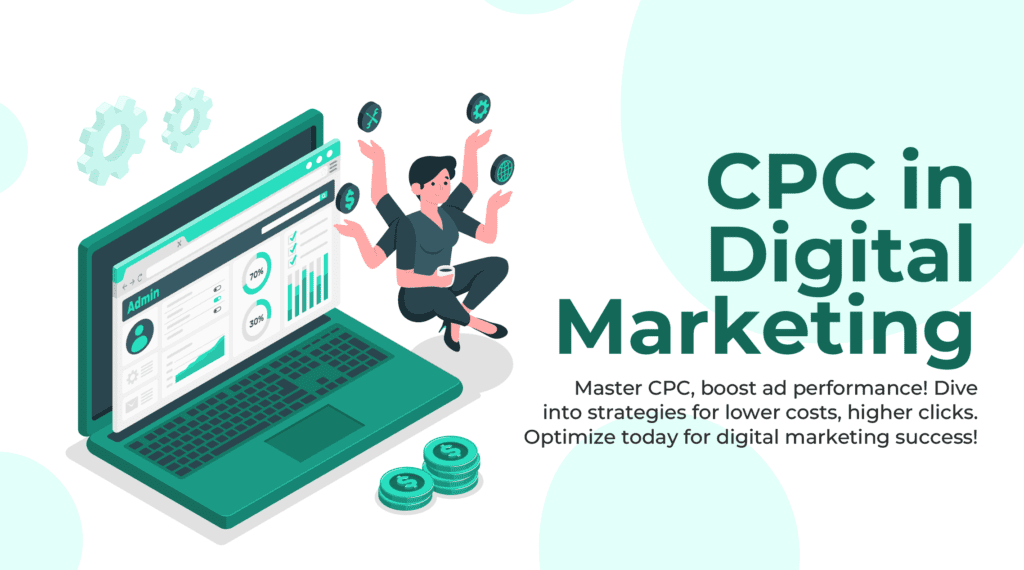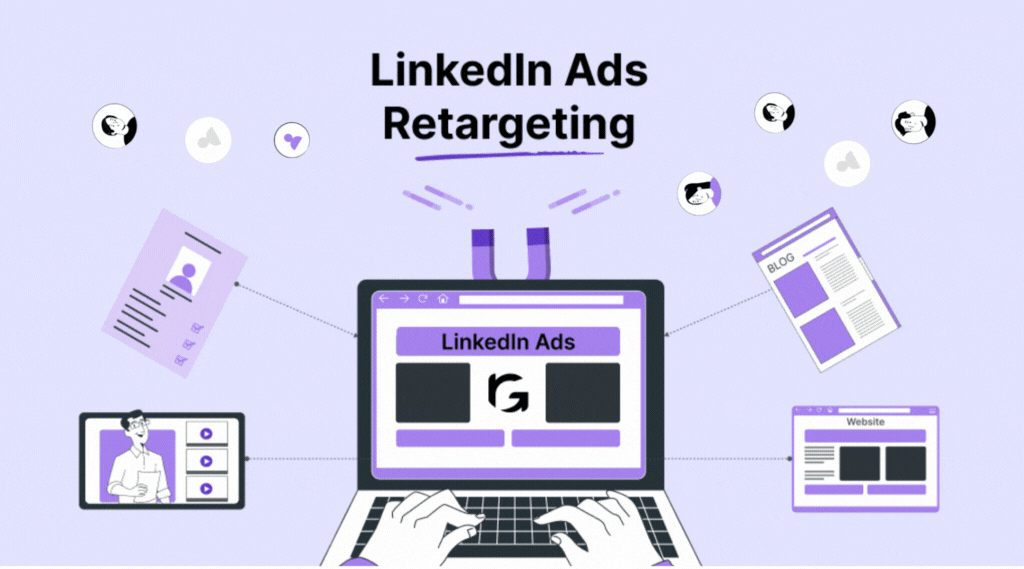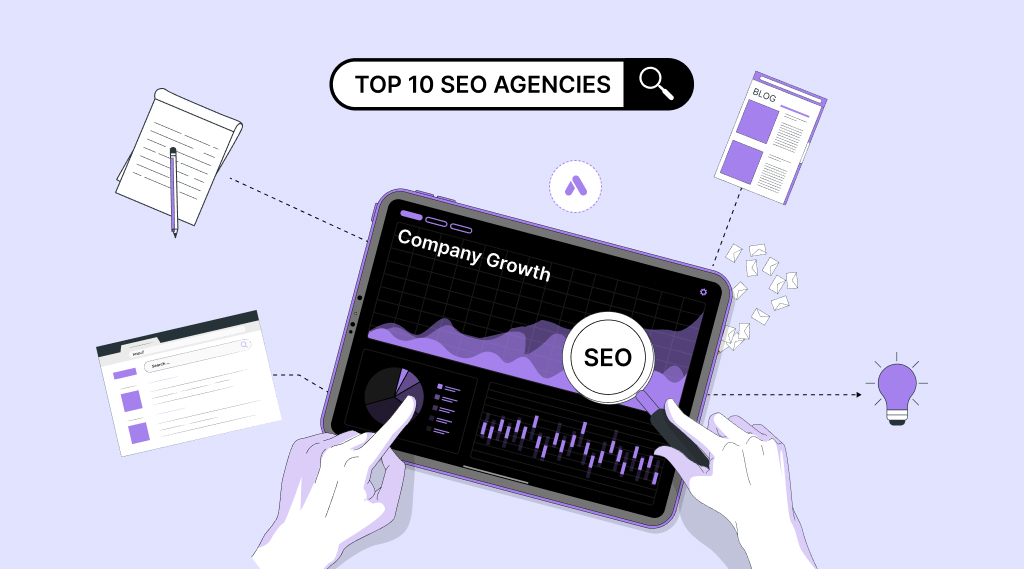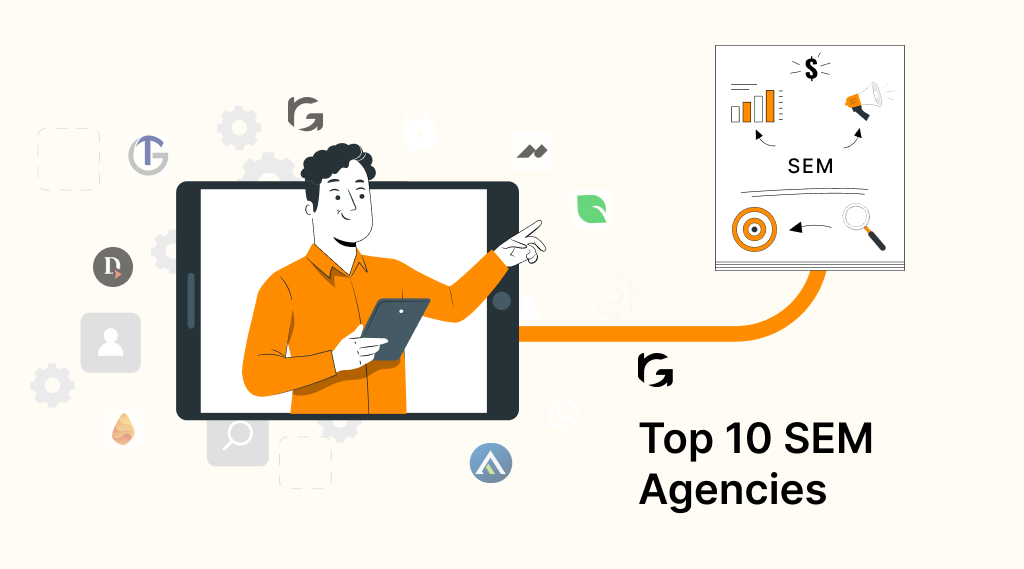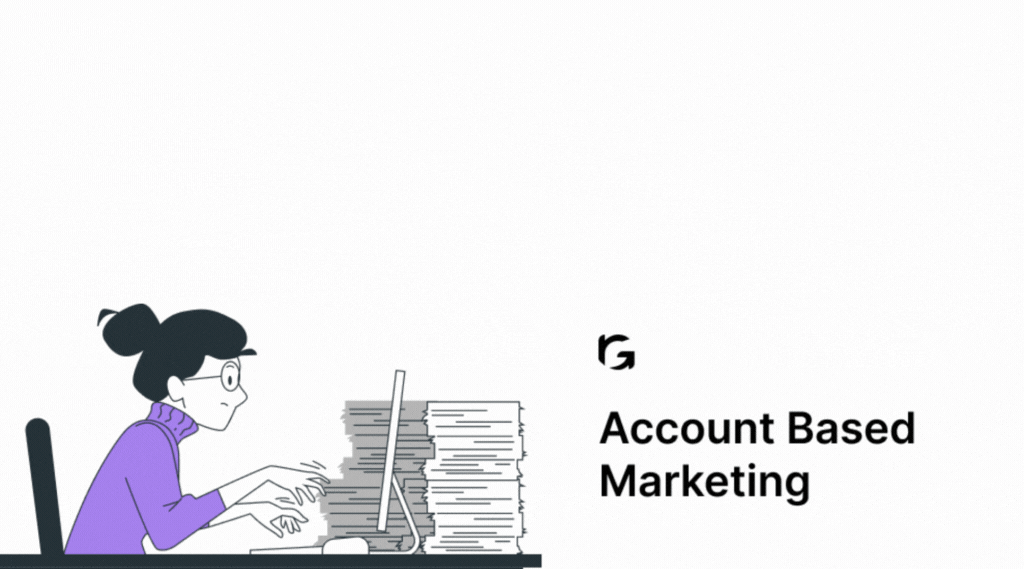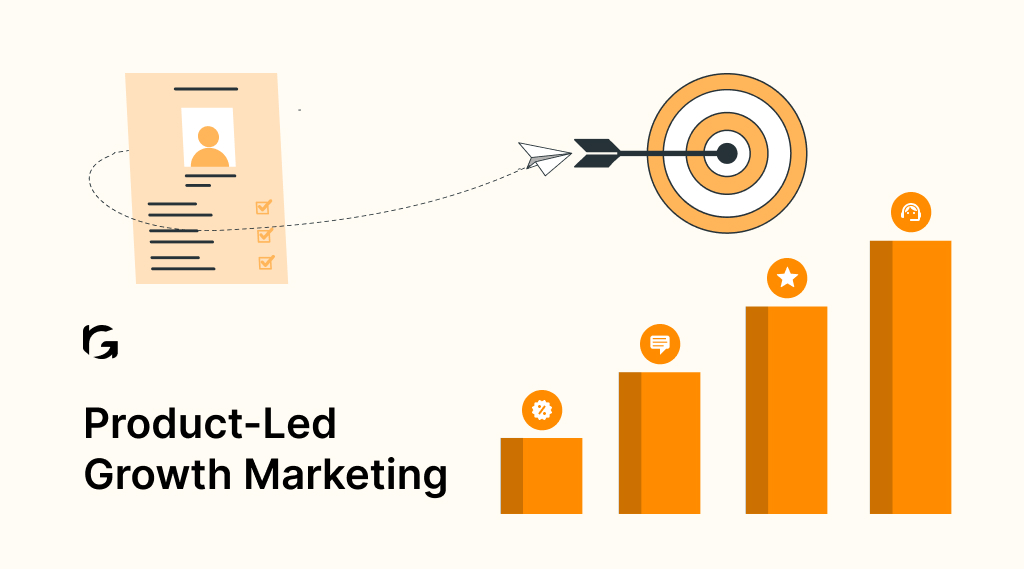Introduction
Digital marketing is undergoing rapid changes, making cost-effective advertising the key to unprecedented success. One crucial metric that every digital marketer must be well-versed in is CPC, or Cost Per Click.
What is CPC ?
The workings of CPC are rooted in the auction-based nature of online advertising, a landscape where advertisers bid for ad placement and pay each time their ad is clicked.
Here’s a step-by-step breakdown of how CPC operates:
Ad Auctions:
- When a user initiates a search or engages with online content, an ad auction is triggered.
- Advertisers bid for the opportunity to display their ads to users based on specific keywords, demographics, or other targeting criteria.
Bid Amounts:
- Advertisers set a maximum bid, indicating the highest amount they are willing to pay for a click on their ad.
- The bid amount, combined with the ad’s quality score, determines its Ad Rank—the position of the ad on the search engine results page (SERP) or display network.
Quality Score:
- Search engines assign a quality score to each ad, reflecting its relevance and user experience.
- A higher quality score can positively impact an ad’s position and lower its CPC, as search engines reward ads that provide valuable content to users.
Ad Positioning:
- Advertisers with higher bids and quality scores secure more prominent ad placements.
- The ad with the highest Ad Rank usually claims the top position, followed by subsequent advertisers based on their rankings.
Cost Calculation:
- The actual CPC is determined through a formula that considers the Ad Rank of the advertiser immediately below, divided by the quality score plus $0.01.
- Advertisers only pay for clicks, not for ad impressions, ensuring a more cost-effective approach to user engagement
How is CPC Calculated?
The calculation of CPC involves a blend of bidding dynamics, quality score, and ad rank, creating a system that rewards advertisers for relevance and engagement while minimizing costs. Let’s break down the formula for CPC:
CPC = (Ad Rank of the Advertiser Below / Quality Score) + $0.01
Here’s a closer look at the components of this formula:
Ad Rank of the Advertiser Below:
- The position of your ad on the search engine results page (SERP) or display network is influenced by the Ad Rank.
- If you’re bidding for a specific keyword, your Ad Rank is determined by your bid amount and the quality score of your ad.
Quality Score:
- This is a metric assigned by search engines, such as Google, to evaluate the relevance and quality of your ad.
- Quality score is influenced by factors like click-through rate (CTR), ad relevance, and the quality of the landing page.
- A higher quality score can lead to a lower CPC, as it signifies a more valuable and user-friendly ad.
$0.01:
- This constant value ensures that you pay a minimal amount more than the Ad Rank of the advertiser immediately below you.
- It serves as the incremental amount needed to maintain your ad’s position in the auction.
Why is Cost Per Click Important?
Cost per Click (CPC) holds a pivotal role in the realm of digital marketing, serving as a key metric with far-reaching implications for advertisers. Here are several reasons why CPC is of paramount importance:
1. Budget Management:
CPC directly influences how much you pay for user engagement. Advertisers can control and allocate their budgets more effectively by understanding and optimizing CPC.
2. Return on Investment (ROI):
For every dollar spent on advertising, the goal is to generate a positive return. CPC plays a crucial role in determining the cost-effectiveness of your campaigns and ultimately impacts the ROI of your marketing efforts.
3. Competitive Positioning:
In the competitive landscape of digital advertising, CPC influences where your ad appears on search engine results pages (SERPs) or display networks. Balancing CPC with bid amounts is key to securing desirable ad positions.
4. Ad Visibility:
Higher CPCs often lead to better ad visibility, placing your content in front of a larger audience. However, finding the right balance ensures visibility without overspending.
5. Optimizing Campaign Performance:
CPC is a reflection of the efficiency of your ad campaigns. A lower CPC indicates that you are effectively reaching and engaging your target audience at a more reasonable cost, enhancing overall campaign performance.
6. Maximizing Ad Reach:
Understanding and managing CPC allows advertisers to extend their ad reach without necessarily increasing their budgets. This is crucial for scaling campaigns while maintaining a cost-effective approach.
7. Strategic Decision-Making:
CPC provides valuable insights into the competitiveness of keywords, the effectiveness of ad copy, and the overall health of a campaign. Advertisers can make informed strategic decisions based on CPC data.
8. Quality and Relevance:
The relationship between CPC and Quality Score emphasizes the importance of delivering relevant, high-quality content to users. A lower CPC is often associated with ads that resonate well with the target audience.
CPC serves as a compass guiding advertisers through the complex landscape of digital advertising, helping them navigate the balance between cost, visibility, and engagement. As we explore strategies to lower CPC, keep in mind that mastering this metric is not just about reducing expenses; it’s about optimizing your entire digital marketing strategy for sustainable success.
Are CPC And PPC The Same?
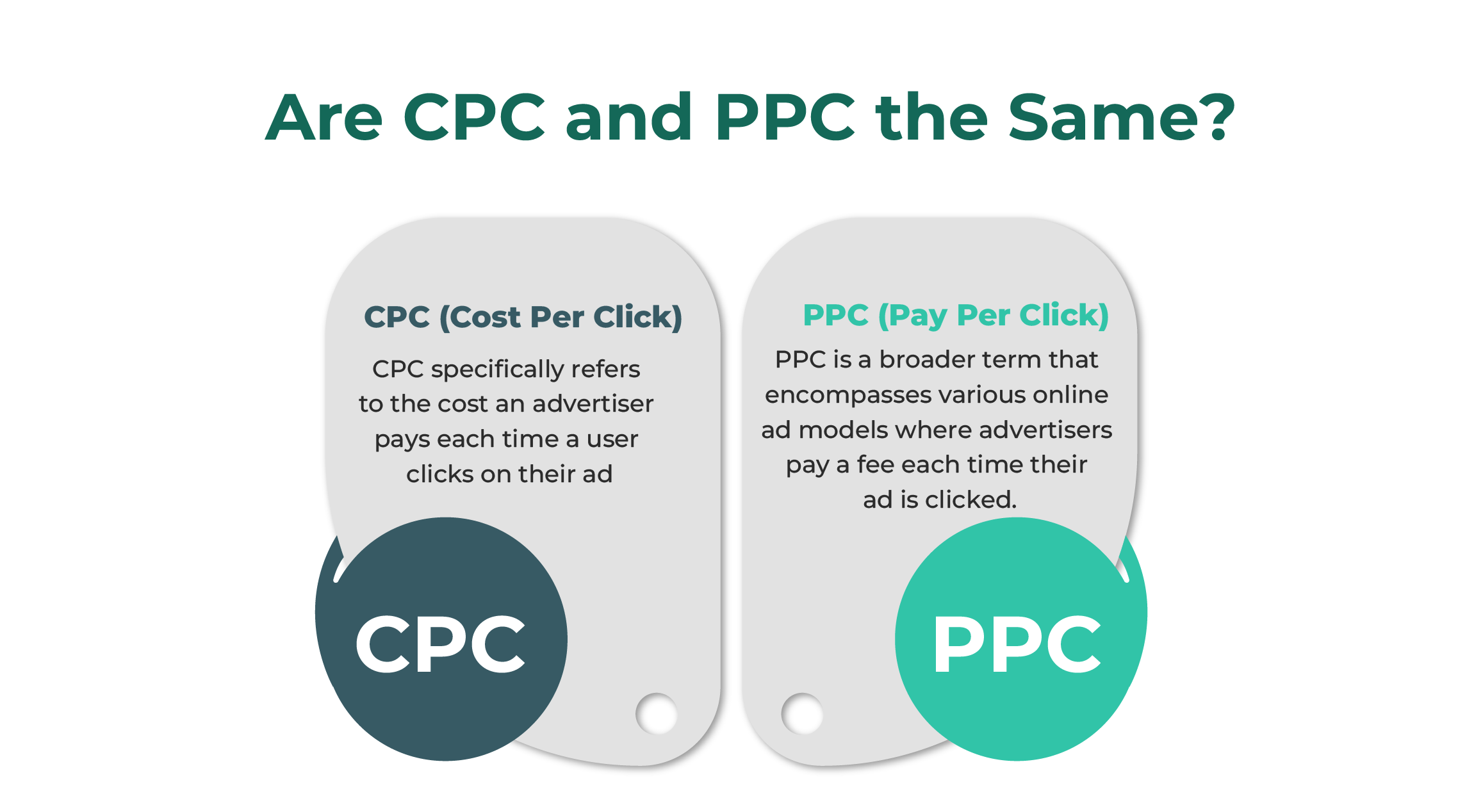
While both CPC (Cost Per Click) and PPC (Pay Per Click) are related concepts in the realm of digital advertising, they refer to slightly different aspects of the payment structure. Let’s clarify the distinction between CPC and PPC:
CPC (Cost Per Click):
- CPC specifically refers to the cost an advertiser pays each time a user clicks on their ad.
- It is a metric used to measure the cost-effectiveness of a campaign, as advertisers are charged based on the number of clicks their ads receive.
- CPC is commonly associated with search engine advertising, display advertising, and some social media advertising platforms.
PPC (Pay Per Click):
- PPC, on the other hand, is a broader term that encompasses various online advertising models where advertisers pay a fee each time their ad is clicked.
- While CPC is a type of PPC model, PPC can also include other payment structures, such as Pay Per Impression (PPI) or Pay Per Acquisition (PPA).
- PPC is a comprehensive term that reflects the overall approach of paying for user interactions with ads, and it doesn’t specify the exact action for which advertisers are charged.
CPC Vs CPM : What’s The Difference?
CPC (Cost Per Click) and CPM (Cost Per Mille) are two different pricing models used in online advertising, each offering distinct advantages depending on campaign objectives and advertising strategies. Let’s delve into the differences between CPC and CPM:
1. Cost Per Click (CPC):
Definition: CPC is a pricing model where advertisers pay for each click on their ad. Advertisers bid on keywords or placements, and they are charged only when a user clicks on their ad.
Payment Structure: Advertisers pay for actual user interactions, specifically clicks. Impressions (how many times an ad is shown) do not factor into the cost.
Use Case: CPC is commonly used when the primary campaign goal is to drive traffic to a website, generate leads, or encourage specific user actions. It is especially effective for performance-driven campaigns where the focus is on measurable actions.
Pros:
- Directly ties payment to user engagement.
- Allows for precise tracking of ROI.
- Well-suited for campaigns with specific conversion goals.
Cons:
- Higher risk if clicks do not convert into desired actions.
- May require ongoing optimization to maintain cost-effectiveness.
2. Cost Per Mille (CPM):
Definition: CPM is a pricing model where advertisers pay for every 1,000 impressions of their ad, regardless of whether users interact with the ad (click) or not.
Payment Structure: Advertisers pay a flat rate for every 1,000 ad impressions. Clicks are not directly factored into the cost, making it a more brand-centric metric.
Use Case: CPM is often chosen when the primary campaign goal is to increase brand visibility, reach a broader audience, or promote general brand awareness. It is advantageous for campaigns where the focus is on impressions rather than clicks.
Pros:
- Effective for building brand awareness.
- Lower risk, as payment is based on impressions rather than clicks.
- Useful for campaigns with the goal of increasing reach.
Cons:
- May not be as directly tied to user engagement or conversions.
- Ad performance is less measurable compared to CPC.
Choosing Between CPC and CPM:
- Campaign Goals: Choose CPC if your primary goal is to drive user actions (clicks, conversions), and opt for CPM if your focus is on increasing brand visibility and impressions.
- Budget and Risk Tolerance: CPC may involve more immediate costs but offers clearer ROI. CPM is often considered a lower-risk option, especially for brand-building campaigns.
- Ad Type and Industry: The type of ad and industry can influence the choice. Performance-oriented ads (e.g., direct response ads) may favor CPC, while brand-focused campaigns may lean towards CPM.
The choice between CPC and CPM depends on your campaign objectives, target audience, and overall advertising strategy. Some campaigns may even use a combination of both models to achieve a balance between performance and brand exposure.
10 Strategies To Reduce Your CPC For Paid Ads
Lowering your CPC (Cost Per Click) is a common goal for advertisers looking to optimize their paid campaigns and improve overall cost efficiency. Here are ten effective strategies to help you achieve a lower CPC:
1. Keyword Optimization:
- Conduct thorough keyword research to identify relevant, high-performing keywords.
- Focus on long-tail keywords that have lower competition and may result in a lower CPC.
- Regularly review and update your keyword list based on performance data.
2. Improve Quality Score:
- Enhance the quality of your ads, landing pages, and user experience to boost your Quality Score.
- A higher Quality Score can lead to a better Ad Rank and potentially lower CPC.
3. Ad Copy Testing:
- Test different ad creatives to identify which ones resonate best with your audience.
- Well-crafted, compelling ads can lead to higher click-through rates (CTR), positively impacting your Quality Score.
4. Landing Page Optimization:
- Optimize your landing pages for relevance and user experience.
- A seamless transition from ad to landing page can improve user satisfaction and potentially result in a lower CPC.
5. Use Negative Keywords:
- Implement negative keywords to filter out irrelevant traffic.
- This helps prevent your ads from appearing in searches that are unlikely to lead to conversions, thereby improving campaign efficiency.
6. Refine Targeting:
- Narrow down your target audience to focus on the most relevant demographics.
- Utilize advanced targeting options, such as location targeting and device targeting, to refine your audience.
7. Bid Management:
- Regularly monitor and adjust your bid amounts based on performance data.
- Experiment with bidding strategies to find the right balance between competitiveness and cost-effectiveness.
8. Dayparting and Scheduling:
- Analyze the times of day and days of the week when your ads perform best.
- Adjust your campaign settings to bid higher during peak times and lower during periods of lower activity.
9. Utilize Ad Extensions:
- Take advantage of ad extensions to provide additional information and encourage clicks.
- Ad extensions can improve ad visibility and potentially lead to a higher Quality Score.
10. Competitive Analysis:
- Monitor the strategies of your competitors, especially those with high Ad Ranks.
- Analyze their ad copy, landing pages, and keyword selection to identify areas for improvement in your own campaigns.
Remember, achieving a lower CPC is not just about cutting costs but optimizing for better overall campaign performance and return on investment. Continuously test, analyze, and refine your strategies based on data to find the most effective combination for your specific advertising goals.
Conclusion
Mastering the art of lowering your CPC for paid campaigns is not only about reducing costs but also about optimizing your entire digital marketing strategy. As we’ve explored, strategic planning and continuous optimization are key to achieving a balance between cost efficiency and campaign effectiveness.
Understanding the nuances of CPC, including bid management, quality score, and ad positioning, empowers you to navigate the complex landscape of online advertising. By implementing the top strategies outlined above—such as keyword optimization, ad testing, and refining targeting—you can work towards achieving a lower CPC without compromising on the quality and relevance of your campaigns.
Remember, the digital marketing landscape is dynamic, and what works today may need adjustments tomorrow. Regularly analyze performance metrics, stay informed about industry trends, and adapt your strategies accordingly. Whether your goal is to drive conversions, increase brand awareness, or reach a specific audience, a holistic approach to campaign optimization will contribute to long-term success.
As you embark on your journey to lower your CPC, embrace the iterative nature of digital marketing. Test, learn, and refine, and you’ll not only achieve a more cost-effective approach but also position your campaigns for sustained growth and impact in the competitive digital landscape. Happy optimizing!
Optimize your CPC now! Elevate your digital marketing game with proven strategies. Start driving results today.
